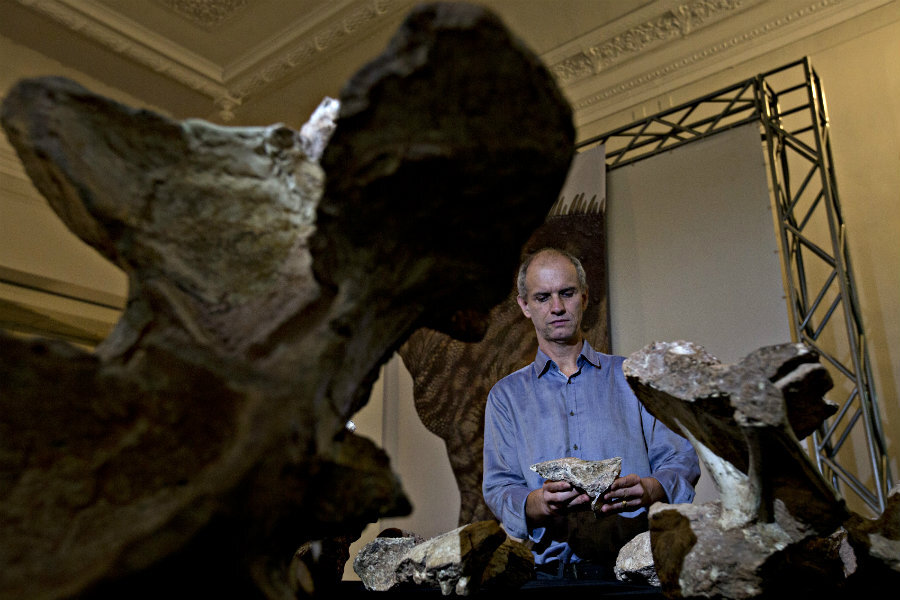How Brazil discovered its largest dinosaur – inside a museum
Loading...
Paleontologists expect to find dinosaur skeletons in many places – ancient riverbanks and rock formations, for example – but rediscovering massive fossils in a cupboard is a bit of a surprise. That's just what happened in Brazil, where scientists have now unearthed the country's largest dinosaur from a storage cabinet.
The dinosaur bones, now cleaned up and on display, were discovered in 1953 by famed Brazilian paleontologist Llewellyn Ivor Price, then relegated to the cupboard in Brazil's Earth Sciences Museum when the museum didn't have enough resources to study them right away.
"A friend said to me just yesterday, 'Diogones, what, it took you 60 years?' It sounds a bit ridiculous to say this," museum director Diogenes de Almeida Campos told Agence France-Presse. "We were waiting for the staff..., for a laboratory that started from nothing to mature. We made a first effort with students about eight years ago and it didn't succeed."
The bones belong to a group of dinosaurs known as Titanosaurs, massive herbivores known for their long necks and tails. This particular set of bones is those of an Austroposeidon magnificus, which lived in Brazil approximately 70 million years ago during the Cretaceous period.
With only a handful of paleontologists in the entire country, Brazil's Earth Sciences Museum struggled to find enough human resources and financial support to investigate Dr. Price's discovery, which remained unattributed for decades.
Eventually, Mr. Campos' doctoral student Kamila Bandeira decided to make the bones the subject of her dissertation. It took her four years to clean and study the bones, and to determine what the massive beast had once been.
That task was made more difficult, Campos said, by the fact that a few of the dinosaurs' massive spinal bones were all that remained.
Austroposeidon was quite a treat for carnivores after it died, said Campos. First, carnivorous animals ate the dinosaur's brain and the marrow from its bones.
Campos painted a grisly picture of the scene for AFP, saying that after the largest animals fractured most of the Austroposeidon's bones, then "came smaller animals and nothing was left over. Anything that did remain the beetles and the spiders and the ants finished, and when there was just bones, the bacteria came. Finally the remains sank into the lagoon."
There they rested for millions of years before Price removed them to the Museum of Earth Sciences' storage closet.
Yet Brazil's newest Titanosaur is not alone in its storage experience. In Scotland, researchers waited decades to study the bones of an ichthyosaur found in one of the region’s famous lochs, a dinosaur that some scientists have playfully nicknamed "the real Loch Ness monster."
In Brazil, the remaining remnants of Austroposeidon's skeleton were finally discovered during road construction, something that Campos says is not uncommon. There are more ancient creatures waiting to be found in Brazil, he says.
"Pay attention when roads are built, when wells are dug," Campos said, according to AFP. "You could have a dinosaur in your backyard and not realize!"








